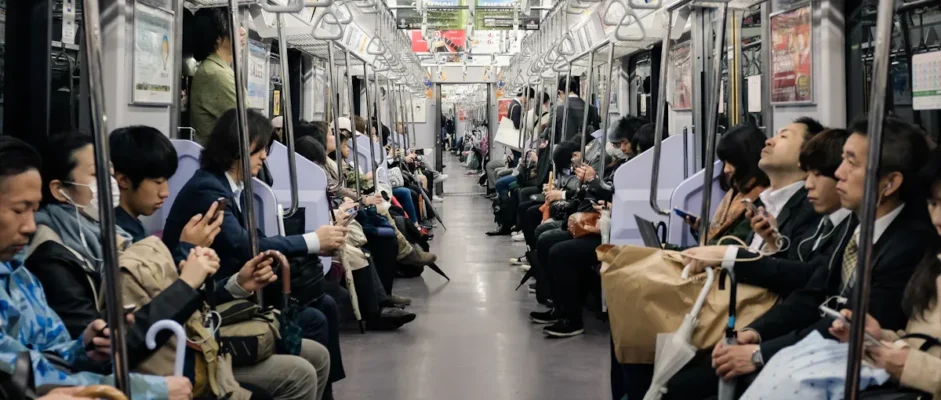I will be honest, The Passengers on the Hankyu Line by Hiro Arikawa felt like a warm cup of tea on a rainy day. If you like calm stories about people with a Japanese setting, you will find these connected stories quietly charming. The book’s cozy feeling and easy setup pulled me in right away.
Key Takeaways
The Passengers on the Hankyu Line tells a kind and calm story.
It shows small moments and gentle connections between people.
The book uses short stories that connect through a train route.
It shows real people who change slowly and feel easy to understand.
People who like quiet stories about characters will enjoy this book.
It also has some Japanese culture. This book feels comforting and makes you feel good.
Worth Reading?
Quick Verdict
I want to be honest. I read The Passengers on the Hankyu Line by Hiro Arikawa all at once. I sat with my dog and drank tea. This book did not shock me or keep me awake. But it did something special. It made me feel calm and hopeful. If you like stories about small moments and gentle bonds, this book is for you.
Dionysus Review Rating: 7/10
Why?
The writing is warm and makes you feel welcome.
The characters seem real, even if their lives are simple.
The stories connect well, like watching people get on and off a train.
What stands out:
The book is very popular on Goodreads and Amazon. Many people give it high scores for its warm feelings and focus on characters.
Lots of reviews say the cozy mood and simple joys changed what they like to read.
I saw that readers who enjoy stories about daily life and growing as a person often tell friends to read this book.
I want to thank Arikawa for making a book that feels like a soft hug. It is not exciting or scary, but it is the kind of story I want after a hard day.
Ideal Readers
I kept thinking about who would enjoy this book like I did. Here are some ideas:
People who like stories about characters and want a gentle feeling.
Readers who need a break from scary or surprising books.
Fans of Japanese culture, or anyone who wants to know about life between Osaka and Kyoto.
People who like short stories that connect, where each chapter shows a new person’s life.
The Passengers on the Hankyu Line by Hiro Arikawa: Overview

Setting and Structure
I always love books that take me somewhere new, and The Passengers on the Hankyu Line by Hiro Arikawa does just that. The whole story unfolds on the Hankyu Line, a real train route connecting Osaka and Kyoto.
I found myself picturing the train stops, the gentle rocking, and the mix of people coming and going. Here’s a quick look at what makes this train line special:
Aspect | Details |
|---|---|
Route | Connects Osaka-umeda Station and Kyoto-kawaramachi Station |
Line Length | |
Number of Stations | 26 |
Service Types | Local, Express, Limited Express, and more |
The book uses this train as a thread, linking together short stories. Each chapter feels like a new window seat, letting me peek into someone else’s life for a moment. The structure is simple but clever. I never felt lost, even as the focus shifted from one character to another.
Main Characters
What really pulled me in were the people. The Passengers on the Hankyu Line by Hiro Arikawa introduces a mix of characters, each with their own worries and hopes. I met:
A widow traveling with her granddaughter, both searching for comfort.
A young man and a young woman, each facing crossroads in their lives.
A mysterious woman in a bridal dress, carrying secrets.
A dachshund who somehow ties stories together.
I noticed how the book uses both human and animal characters to show feelings anyone can understand. The author lets us see their thoughts and emotions, sometimes through small actions or even a look.
I felt like I was right there, sharing their quiet moments. The tone stays gentle and cozy, never rushing or forcing drama. It’s the kind of book that made me want to slow down and just enjoy the ride.
Character Connections
Intertwined Stories
I have to admit, I love when a book lets me peek into different lives and then shows how they all fit together. The Passengers on the Hankyu Line does this in a way that feels both clever and comforting. Each story stands on its own, but the train brings everyone together.
Sometimes, I spotted a character from one chapter in the background of another. It felt like a little secret only I noticed.
Each chapter focuses on a new person, but the train line connects them all.
Small moments—like a glance, a shared seat, or a lost item—link the stories.
Recurring faces pop up, reminding me that everyone’s journey matters.
This style reminds me of books like Cloud Atlas or Fingersmith, where stories overlap and characters cross paths in surprising ways. I found myself looking for these connections, almost like a puzzle. It made the reading experience more fun and personal.
I kept thinking, “Who will show up next?” It’s like riding the train and wondering about the strangers around you.
Growth and Change
What really stuck with me was how each character changed, even in small ways. No one has a huge, jaw-dropping moment, but I saw real growth. A shy girl finds her voice. A lonely widow opens her heart. Even the dachshund seems to bring people together.
Personal growth feels honest and slow, just like real life.
Change comes from tiny acts—kindness, courage, or just listening.
I finished the book feeling hopeful. These stories reminded me that even a short ride can change someone’s day—or their whole outlook. Sometimes, the smallest connections make the biggest difference.
Themes and Style
Human Connection
I always look for books that make me feel less alone. This one does that in a quiet, gentle way. Human connection sits at the heart of every story on the Hankyu Line. Each character, even the dachshund, reaches for some kind of bond—sometimes with a stranger, sometimes with family, sometimes just with themselves.
I noticed how a simple act, like sharing a seat or a smile, can change someone’s whole day.
The book reminded me of how a five-minute chat or a kind word can lift my mood.
Experts say things like hugging, holding hands, or even petting a dog can help us feel better. I saw that in these stories, too.
I felt a little lighter after reading about these small moments. It made me want to pay more attention to the people around me.
The author shows that we all need connection, like we need food or sleep. Even a short ride with a stranger can leave a mark. That idea stuck with me long after I closed the book.
Everyday Life
What I love most about this book is how it finds beauty in the ordinary. The stories don’t have wild twists or chilling surprises. Instead, they show real people doing everyday things—riding a train, talking with family, or just thinking about their lives.
The writing feels honest and simple, like a friend telling me about their day.
I saw myself in the characters’ small worries and hopes.
The book uses storytelling to help me make sense of my own life, just like experts say stories help us understand who we are.
Research shows that stories about daily life stick with us because they match what we already know. I think that’s why I remembered these characters so well. Their lives felt real, and their small joys and struggles made me care about them.
Japanese Culture

Setting Details
I always get excited when a book lets me feel like I’m actually in another country. The Passengers on the Hankyu Line does this with small, careful touches.
I could almost hear the train doors sliding open and see the city lights outside the window. The story’s setting between Osaka and Kyoto feels real and lived-in.
Japanese aesthetics show up everywhere. I noticed the idea of wabi-sabi—finding beauty in things that are simple or a little worn. The book also hints at mono no aware, which means feeling the gentle sadness of things changing.
The characters’ actions often feel soft and polite. I saw the concept of kawaii (cuteness) in the way people treat each other and even in the dachshund’s role.
Japanese culture blends old and new. The train itself is modern, but the way people act and think shows deep roots in tradition.
I read that Japanese culture often mixes outside influences with its own style. Even when things look Western, there’s always something that feels uniquely Japanese.
Social Context
The book also made me think about how people connect in Japan. I noticed that everyone seems to care about the group, not just themselves. Family, friends, and even strangers on the train all matter.
Social support stands out. People help each other in small ways, like sharing a seat or giving advice. Research says these social ties help people feel healthier and happier.
The idea of honne (true feelings) and tatemae (public face) pops up. Sometimes, characters hide their worries to keep the peace. I found this both touching and a little sad.
In Japan, kids learn early to work together and think about others. The book shows this in how characters act, even when they feel alone.
I felt like the Hankyu Line wasn’t just a train. It was a place where people’s lives touched, even for a moment. That’s something I’ll remember every time I see a train in a story.
Strengths and Drawbacks
What Shines
I’ll be honest, this book gave me the kind of comfort I usually only get from my favorite blanket. Here’s what stood out for me:
Uplifting Tone: Every page felt like a gentle nudge to notice the good in people. The stories never tried too hard to impress. They just let kindness and hope shine through.
Relatable Characters: I saw bits of myself in almost every passenger. Their worries, small joys, and quiet moments felt real. I think anyone who’s ever felt lost or needed a little encouragement will see themselves here.
Gentle Storytelling: The writing style is simple but never boring. Each chapter has a clear purpose, almost like the author planned every stop on the train. I noticed how the book’s structure reminded me of a well-organized plan, with each story building on the last.
Honest Emotions: The book never hides from sadness, but it always circles back to hope. I finished each story feeling a little lighter.
I have to give props to the author for making everyday life feel special. Sometimes, the smallest stories stick with me the longest.
Minor Flaws
No book is perfect, and this one has a few quirks that might not work for everyone:
The quiet pace sometimes made me check the clock. If you want a pulse-pounding plot, you might get restless.
The episodic structure means some stories feel short or unfinished. I found myself wishing for more time with certain characters.
At times, the book repeats small details or leans on similar themes. This can make the stories blend together if you read them all at once.
Some readers might want more drama or big twists. This book keeps things calm, which could feel slow.
To be fair, these are small things. I still enjoyed the ride, even if it wasn’t always fast or flashy.
Sip The Unknown—Discover Stories You Never Knew You’d Love!
Dionysus Reviews Has A Book For Every Mood
Biography & Memoir
Fiction
Mystery & Detective
Nonfiction
Philosophy
Psychology
Romance
Science Fiction & Fantasy
Teens & Young Adult
Thriller & Suspense
Frequently Asked Questions
Is this book hard to follow if I don’t know Japanese culture?
Not at all! I found the stories easy to understand. The author explains enough, so I never felt lost or confused.
Do I need to read the stories in order?
I suggest reading them in order. The connections feel more special that way. You might miss a few fun links if you skip around.
Will I cry reading this book?
I didn’t sob, but a few moments made my eyes sting. The book feels gentle, not sad. It left me feeling hopeful, not heavy.









